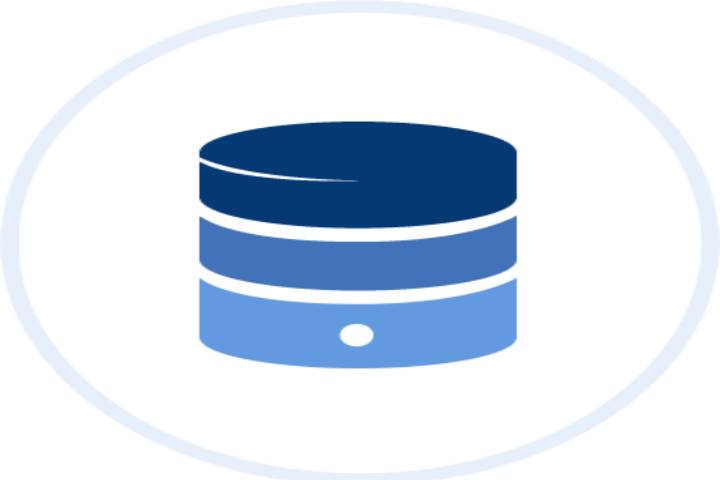What Is Master Data Management?

The company’s reference data (or master data ) is unique and fundamental information necessary to feed all the processes of the company. As applications multiply, each producing a phenomenal amount of data – and a sizable share of duplicates and errors), master data is the point of truth that powers processes. The result: fewer errors and increased performance.
Data governs both the organization of companies and their activity. They are also of different natures:
- Structure Data: These define the organization, whether it is the structure of the company’s services, information on employees, or an accounting organization.
- Product Data: This data concerns the commercial and technical characteristics of the products and the manufacturing and sales information.
- Third-Party Data: It concerns customers, prospects, suppliers, and business partners, as well as marketing sites.
- Resource Data: This is information relating to equipment, service providers, sites, and any other tool is allowing the implementation of the activity.
This wealth of data makes their management (called Master Data Management) a strategic subject for IS. All business processes are based on their proper implementation. Operations that must be fed quickly, with a high degree of confidence in the compliance and correctness of the data.
Suppose the final objective of Master Data Management is to circulate reliable, available, and exhaustive data throughout the IS. In that case, it is necessary to address a certain number of issues to achieve this objective:
- Fluid sharing of reference data between all IS applications
- The best data entry, without errors or duplicates
- Improving the user/employee experience
- The compliance with regulations such as RGPD
- Limitation of maintenance operations and other time-consuming tasks
The weight of each of these issues on data architecture differs from one company to another. Therefore, it calls for a personalized organization, which will take into account business needs and guarantee the best possible circulation of data on a technical level.
Also Read: How To Build Big Data Applications With A Low-Code Platform
Table of Contents
What Architectures Exist Around MDM?
The architecture chosen to exchange reference data across the entire IS has a strong impact on the organization. It conditions the resources used and the speed of information processing. Each type of architecture will correspond to a particular mode of consultation of the data.
Among the most common architectures, there are four main solutions:
Centralized Architecture
This first type of architecture is organized around a central tool, the MDM software which will collect and unify information. The software tools dedicated to MDM are based on deduplication, data tracing, and monitoring functions throughout the life cycle. As soon as it is collected, the data is structured according to the company’s business rules, thus establishing a unique version of the data.
This is how it will provide the greatest added value and the greatest possible efficiency to the processes.MDM makes it possible to establish precise control over the entire data lifecycle. With regulations and data integrity taking precedence in many industries, this control is often the predominant criterion for successful architecture.
Distributed or Distributed Architecture
This architecture is based on the current concept of microservices: classified into a certain number of services, business applications themselves take charge of the data that concerns them. With this model, the reference data is therefore delocalized for each application and not centralized. Any other instance wishing to consult the data will have to retrieve it from the master application. This architecture makes it possible to guarantee true business data integrity. These do not undergo standardization, as would be the case with a single tool.
Their quality is better preserved. However, the distributed model creates a complex organization, which requires knowing the location of the data well and keeping the system synchronized in the event of modification thereof. The distributed architecture also raises an important application availability challenge. A significant part of the process then depends on the performance of the information transfer.
Virtual Architecture
This model attempts to reconcile centralized and distributed architectures. The data, still managed individually by the applications, is easier to locate: a virtual repository acts as an information mediator, communicating the location of the data to the applications that consult it. Here again, the question of the availability and the freshness of the data is complex. The virtual model creates opacity as to which applications manage the data.
Also Read: DNA Inspired Encryption To Protect Data In The Cloud
How To Choose The Right Architecture For Your Reference Data?
The management of master data is a real fundamental subject: it calls for a strategic reflection around how the company’s processes, the main users of the data, are organized.
- On the one hand, data is shared by so-called vertical applications ( ERP, PLM, WMS, PIM, etc.), which enrich it throughout the life cycle of products or services.
- But cross-functional processes and the applications that employ them (BI, project portfolio management, etc.) are also important in making data more useful and breaking down barriers.
- Finally, the regulatory framework and the sensitivity of certain data play a strong role in the chosen architecture.
- For the company, it is, therefore, necessary to organize the reference data according to its priorities after having identified them.
Reference data must now support the customer-centric strategy of companies: customer data must be quickly collected and cross-checked to offer a high-performance user experience. But the need for quality and traceability continues to prevail, especially in highly regulated sectors. To make the right choice, it is necessary to identify the purpose of the data and their level of sensitivity and anticipate the volumes of data and the applications that will use it.
